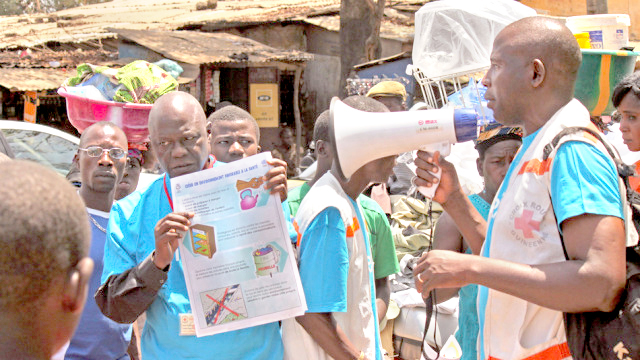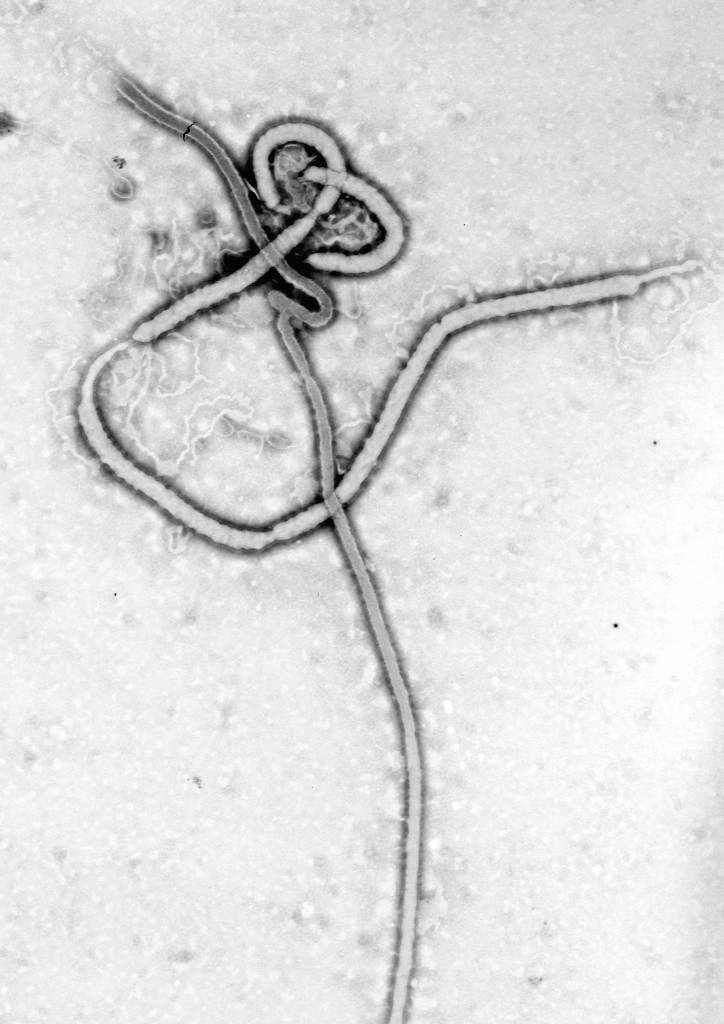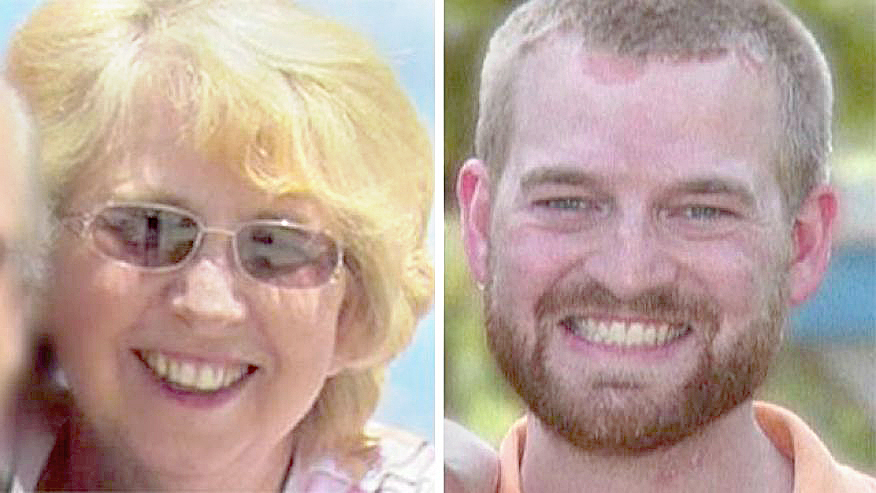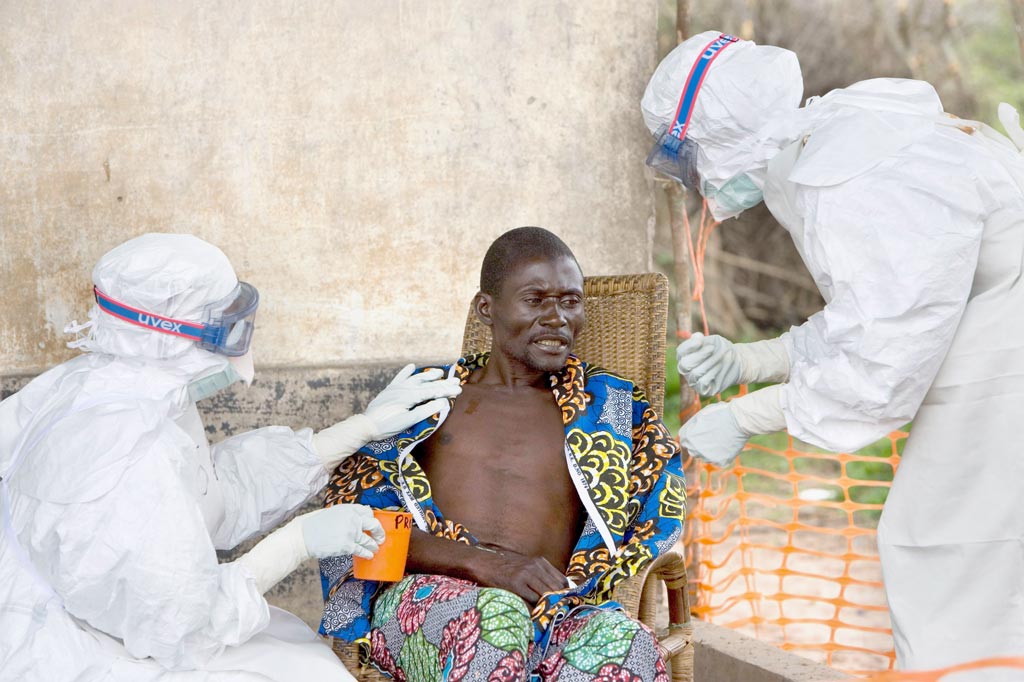Ebola Virus Outbreak
Could Ebola Virus Become A Threat In The U.S.?
As the Ebola virus continues to spread throughout West Africa, with increasing concern among both health officials and the public alike, recent media reports about a death of a man who traveled to Lagos, Nigeria having been in an area rife with Ebola Virus, recently caught the world’s attention–and for good reason.
As we live in an interconnected world–and not just by the internet- we have to come to grips with the fact that hopping on a plane may potentially spread any virus–not just Ebola–to another country.
Thus, the importance of enforcing proper infectious screening procedures of those who plan to board an aircraft in an endemic area such as West Africa becomes critical to containing the spread of the Ebola virus. Enforcing a “Do Not Board List” would be critical to preventing any spread of such a virus.
While the Ebola virus could potentially be transported by travelers to another country by a plane ride, according to officials at the CDC, the actual chance of this developing in a serious public health risk to those living in the US is small.
One of the main reasons, officials believe, that the virus has a low public health risk is related to the conditions which would be favorable to allow spread of the virus. Poor and crowded living conditions, along with improper sanitation seem to be an important element that contribute to the spread of the virus. Such are not the living conditions, in general, throughout most modernized countries in the Western world
Ebola, comprised of 5 strains, was first identified in 1976 in the Western Democratic Congo along the Ebola river. Four of the strains can be spread to humans. The fifth resides only in primates. The fruit bat, considered a delicacy in West Africa, is typically considered a natural reservoir of the Ebola virus.
Ebola is spread directly, human-to-human, by secretions such as saliva, sweat, but also by blood and feces. It can be spread directly by a break in the skin or mucous membranes or indirectly after touching your nose, mouth or eyes after having contact with the virus. It is not transmitting by coughing or sneezing (droplet spread)- as would be the case for someone with influenza or measles.
Ebola virus, a member of the family of filoviruses, is one of the most deadly viruses known to man, owing to its ability to constantly undergo changes or mutations in its viral proteins. Symptoms begin suddenly–often with an intense headache and fatigue, sore throat and chills–followed by vomiting, and diarrhea with onset of a hemorrhagic rash in the upper roof of the mouth and the skin that appears to be blister-like. The virus attacks the immune system, releasing inflammatory mediators, which lead to collapse of the coagulation pathway, ending in massive external and internal bleeding.
While the virus incubates from 2-21 days, its important to know that only those who are symptomatic–generally after 8-9 days–having fever along with diarrhea, vomiting and potentially a hemorrhagic rash can transmit the virus to others.
As a result, if someone on a plane with active symptoms–including vomiting and diarrhea –soils a restroom, another person who is not aware could theoretically touch a contaminated area, and then acquire the virus.
That said, its important to know that the majority of those who have become infected with the Ebola virus have been primarily healthcare workers in close contact with patients as well as family members caring for sick family members. In addition, the risk of transmission from family members touching an infected corpse prior to burial represents another potential mode of transmission.
As a caveat, its also important to know that early on its course, persons with Ebola may have symptoms that are nonspecific (headache, chills fever) making identification of the virus nearly impossible. It could be easily be mistaken for other illnesses including malaria, cholera or even typhoid fever. Only many days into the illness–after the onset of profuse vomiting and diarrhea–will a patient exhibit the telltale signs of Ebola with bleeding from the mouth and nose along with rectal bleeding concurrent with shock, liver and renal failure, followed by continued bleeding and fulminant cardiovascular collapse.
As a result, a heightened awareness, proper education, and a recent travel history from West Africa are vital for for healthcare providers who are on the front lines.
The public should be assured that medical providers in all US emergency departments are on high alert for persons with active symptoms and who have a concerning travel history. Prompt isolation using universal precautions, (gown, gloves, mask, eye protection) by providers is essential to preventing spread of the virus.
Future Course?
At this time, there is no vaccine or antiviral medication available to treat the disease. Only supportive care, with intravenous fluids, platelet and blood transfusions are available to patients. While there have been some promising experimental treatments in animal models,(monoclonal antibodies), there are no treatments that are currently available for humans.
With obvious technical issues regarding the high mutability of the virus–related to the proteins on its surface—preventing researchers from being able to produce a vaccine or viable antiviral medication, larger issues such as the danger of handling the virus (Biosafety Level 4) often have prevented more intense efforts to aggressively pursue research. With few patients having the disease and far fewer surviving, research efforts have likely been compromised.
However, one recently discovered compound, BCX 4430, reported by researchers in a paper in Nature (April, 2014), may hold promise for not only treating Ebola, but other deadly viruses such as Marburg, as well as MERS, SARS, dengue and measles.
Developed by US Army’s highly specialized biolaboratory in Fort Detrick, Maryland, the compound is a RNA dependent RNA polymerase that has shown promise in nonhuman primate models, as well as some in vitro activity against the virus in human cells. In their experiment, 18 Macaque monkeys who were exposed to the deadly Marburg virus, but then given post exposure treatment (1, 24, and 48 hrs) with BCX4430 exhibited near complete survival. 17 of the 18 treated monkeys survived based on results of the trial. There have been no human trials reported to date.
Source: Robert Glatter. MD / Forbes
===================================
Fears of Ebola spread in West Africa as 2nd American infected with virus
Health officials in West Africa are scrambling to contain a possible widening of an Ebola outbreak after a man believed to be affected by the virus traveled by plane from Liberia to Ghana to Togo to Nigeria, where he died on Friday.
The death of Patrick Sawyer, 40, has led to tighter screening of airline passengers in West Africa, Ebola has killed more than 670 people in Guinea, Sierra Leone and Liberia since the outbreak began in March.
The World Health Organization is awaiting laboratory confirmation after Nigerian health authorities said Sawyer tested positive for Ebola, WHO spokesman Gregory Hartl said. The WHO has not recommended any travel restrictions since the outbreak came to light.
“We would have to consider any travel recommendations very carefully, but the best way to stop this outbreak is to put the necessary measures in place at the source of infection,” Hartl said. Closing borders “might help, but it won’t be exhaustive or foolproof.”
Sawyer was a former resident of Coon Rapids, Minn., and his wife, Decontee, said he had planned to visit next month to visit his three daughters, two of whom had birthdays in August. Decontee Sawyer said her husband, a U.S. citizen, had moved back to his native Liberia to work for the country’s Ministry of Finance. She told KARE-TV that she believed he had contracted Ebola from his sister.
Witnesses told the Associated Press Sawyer was vomiting and had diarrhea aboard at least one of his flights with some 50 other passengers aboard. Ebola can be contracted from traces of feces or vomit, experts say.
The new concern comes as the condition of an American doctor diagnosed with Ebola reportedly deteriorated. The Associated Press reported that Dr. Kent Brantly, 33, is in grave condition and fighting for his life in an isolation unit on the outskirts of Monrovia, the capital of Liberia. A former colleague of Brantly, Dr. David Mcray, told AP that efforts to evacuate Brantly to Europe for treatment have been thwarted because of concerns expressed by countries he would have to fly over en route to any European destination.
On Sunday, another American aid worker tested positive for the virus. Nancy Writebol, a worker with allied aid group Serving in Mission (SIM), is in stable and serious condition, according to an official at the North Carolina-based aid group Samaritan’s Purse.
According to Ken Isaacs, a Samaritan’s Purse vice president, Writebol, who had been working as a hygienist decontaminating those entering and leaving the Ebola care area at the hospital, was showing full symptoms of the virus.
The risk of travelers contracting Ebola is considered low because it requires direct contact with bodily fluids or secretions such as urine, blood, sweat or saliva, experts say. Ebola can’t be spread like flu through casual contact or breathing in the same air.
Sawyer was immediately quarantined upon arrival in Lagos — a city of 21 million people — and Nigerian authorities say his fellow travelers were advised of Ebola’s symptoms and then were allowed to leave. The incubation period can be as long as 21 days, meaning anyone infected may not fall ill for several weeks.
Health officials rely on “contact tracing” — locating anyone who may have been exposed, and then anyone who may have come into contact with that person. That may prove impossible, given that other passengers journeyed on to dozens of other cities.
International travel has made the spread of disease via airplanes almost routine. Outbreaks of measles, polio and cholera have been traced back to countries thousands of miles away. Even Ebola previously traveled the globe this way: During an outbreak in Ivory Coast in the 1990s, the virus infected a veterinarian who traveled to Switzerland, where the disease was snuffed out upon arrival and she ultimately survived, experts say.
The mere prospect of Ebola in Africa’s most populous nation has Nigerians on edge.
In Nigeria’s capital, Abuja, Alex Akinwale, a 35-year-old entrepreneur, said he is particularly concerned about taking the bus, which is the only affordable way to travel.
“It’s actually making me very nervous. If I had my own car, I would be safer,” he said. “The doctors are on strike, and that means they are not prepared for it. For now I’m trying to be very careful.”
It’s an unprecedented public health scenario: Since 1976, when the virus was first discovered, Ebola outbreaks were limited to remote corners of Congo and Uganda, far from urban centers, and stayed within the borders of a single country. This time, cases first emerged in Guinea, and before long hundreds of others were stricken in Liberia and Sierra Leone.
Those are some of the poorest countries in the world, with few doctors and nurses to treat sick patients let alone determine who is well enough to travel. In Sawyer’s case, it appears nothing was done to question him until he fell sick on his second flight with Asky Airlines. An airline spokesman would not comment on what precautions were being taken in the aftermath of Sawyer’s journey.
Liberian Assistant Health Minister Tolbert Nyenswah told The Associated Press last week that there had been no screening at Liberia’s Monrovia airport. That changed quickly over the weekend, when President Ellen Johnson Sirleaf said a new policy on inspecting and testing all outgoing and incoming passengers will be strictly observed. She also announced that some borders were being closed and communities with large numbers of Ebola cases would be quarantined.
International travelers departing from the capitals of Sierra Leone and Guinea are also being checked for signs of fever, airport officials said. Buckets of chlorine are also on hand at Sierra Leone’s airport in Freetown for disinfection, authorities said.
Still, detecting Ebola in departing passengers might be tricky, since its initial symptoms are similar to many other diseases, including malaria and typhoid fever.
Source: FoxNews / AP
===============================
Ebola doctor dies
Sheik Umar Khan becomes second specialist to die, as West Africa grapples with worst outbreak of virus on record.
Sierra Leone’s top Ebola doctor has died from the disease, medical officials have said.
Sheik Umar Khan was infected earlier this month and died on Tuesday at a ward run by medical charity Doctors Without Borders in the far north of the country.

The head doctor fighting the deadly tropical virus Ebola in Sierra Leone has himself caught the disease, the government said. The 39-year-old Sheik Umar Khan, hailed as a “national hero” by the health ministry, was leading the fight to control an outbreak that has killed 206 people in the West African country. Ebola kills up to 90 percent of those infected and there is no cure or vaccine.
Miatta Kargbo, Sierra Leone’s health minister, called Khan a “national hero” and praised hi “tremendous sacrifice” in working to save the lives of others.
His death comes days after Samuel Brisbane, a senior doctor at Liberia’s largest hospital, died on Saturday at an Ebola treatment centre on the outskirts of Monrovia.
Several other medics have been infected. The aid group Samaritan’s Purse said on Saturday that a US doctor, Kent Brantly, who was working in Liberia was also sick.
Health workers are at serious risk of contracting the disease, which spreads through contact with bodily fluids.
Ebola has killed hundreds of people in West Africa in the worst outbreak on record. The World Health Organisation says this 219 people in Liberia, 319 people in Guinea and 224 in Sierra Leone have died.
Nigeria death
The disease has also killed the Liberian husband of an American woman who had flown to Lagos, Nigeria.
The family of Patrick Sawyer, who died on July 24, had said recently returned to the US for a visit. Health officials said his family members were not affected.
Officials stressed people were not contagious until they showed symptoms, and the Sawyer family left Liberia days before he fell ill.
Sawyer, a consultant for Liberia’s Finance Ministry in his 40s, collapsed on arrival at Lagos airport. He was put in isolation at the First Consultants Hospital in Obalende.
Source: Aljazeera
===========================





